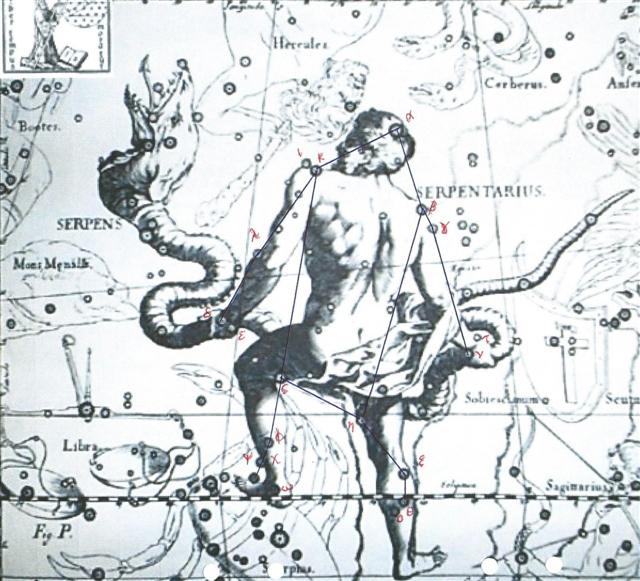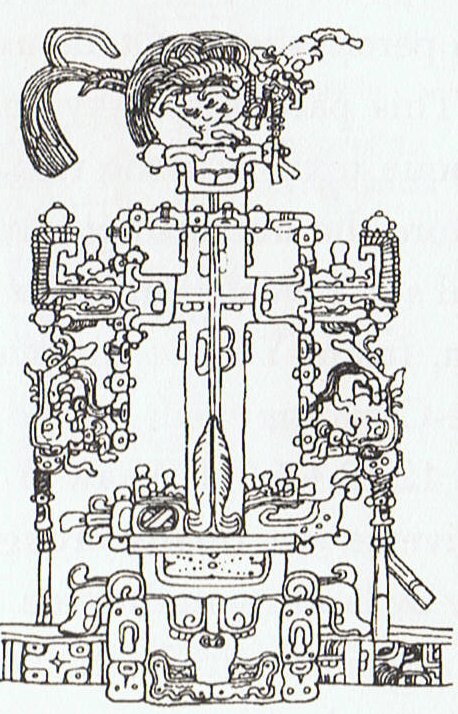There was no rakau tree at Virgo (Mother Earth) but 10 weeks after Spica one (1) had been generated:
I think the old tree had fallen on his face in order to make place for the new 1, who came 11 days after glyph 78 (alluding to the synodic cycle of Mars, i.e. to 780 days). The head of the old man was obviously quite fruitful (Ca4-2): ... When the man, Ulu, returned to his wife from his visit to the temple at Puueo, he said, 'I have heard the voice of the noble Mo'o, and he has told me that tonight, as soon as darkness draws over the sea and the fires of the volcano goddess, Pele, light the clouds over the crater of Mount Kilauea, the black cloth will cover my head. And when the breath has gone from my body and my spirit has departed to the realms of the dead, you are to bury my head carefully near our spring of running water. Plant my heart and entrails near the door of the house. My feet, legs, and arms, hide in the same manner. Then lie down upon the couch where the two of us have reposed so often, listen carefully throughout the night, and do not go forth before the sun has reddened the morning sky. If, in the silence of the night, you should hear noises as of falling leaves and flowers, and afterward as of heavy fruit dropping to the ground, you will know that my prayer has been granted: the life of our little boy will be saved.' And having said that, Ulu fell on his face and died. His wife sang a dirge of lament, but did precisely as she was told, and in the morning she found her house surrounded by a perfect thicket of vegetation. 'Before the door,' we are told in Thomas Thrum's rendition of the legend, 'on the very spot where she had buried her husband's heart, there grew a stately tree covered over with broad, green leaves dripping with dew and shining in the early sunlight, while on the grass lay the ripe, round fruit, where it had fallen from the branches above. And this tree she called Ulu (breadfruit) in honor of her husband. The little spring was concealed by a succulent growth of strange plants, bearing gigantic leaves and pendant clusters of long yellow fruit, which she named bananas. The intervening space was filled with a luxuriant growth of slender stems and twining vines, of which she called the former sugar-cane and the latter yams; while all around the house were growing little shrubs and esculent roots, to each one of which she gave an appropriate name. Then summoning her little boy, she bade him gather the breadfruit and bananas, and, reserving the largest and best for the gods, roasted the remainder in the hot coals, telling him that in the future this should be his food. With the first mouthful, health returned to the body of the child, and from that time he grew in strength and stature until he attained to the fullness of perfect manhood. He became a mighty warrior in those days, and was known throughout all the island, so that when he died, his name, Mokuola, was given to the islet in the bay of Hilo where his bones were buried; by which name it is called even to the present time ... Hua poporo in Ca1-19 was probably intended to illustrate the breadfruit tree, which served like a notch (poro) in the night sky from where to count calendar days (po). Here was Ana-roto (the pillar in the middle), the 19th Babylonian station (the Virgin's Girdle), the 12th Arab station (Lofty), the 14th Hindu station (the Bright One), and Horn, the first Chinese station.
At kua tuu tona mea the left thumb of Ophiuchus (τ) held the tail of the Serpent with his ζ just above:
The vertically oriented head part (Caput) of the Serpent came first, whereas its horizontally oriented tail (Cauda) came into view only beyond Ophiuchus. This theme was surely very old: ... Actually, we are up against a completely incomprehensible narrative of events which occurred during a sea voyage. The plant, according to Albright (AJSL 36, p. 281, n. 2) literally 'thorny grapevine' is supposed to grow in the apsu, and to be accessible by way of a 'water-pipe'. This pipe, rātu, however, is a conjecture right here: the word occurs only later when, after his bath in a well, and the following loss of the plant, Gilgamesh complains bitterly about his frustration, i.e., about having obtained a boon for the 'earth lion' instead of for himself. The 'earth lion', identified with the thievish serpent, is assumed in its turn to live 'in a well which communicated with the apsu' (Albright, 35, p. 194). It is then (GE 11.298) that the hero says: 'When I opened the water-pipe and (...) the gear, I found that which has been placed as a sign for me: I shall withdraw and leave the boat on the shore' (Speiser trans., ANET, pp. 96f.) ... The Olmec Tree was in the center (ki roto) of a quincunx pattern and his quartet of 'fruits' (hua) had their eyes filled with tears. Also the hua poporo type of glyph had a quartet of drops:
The Mayas saw their king as a ceiba tree, we should remember: ... What I saw stunned me, for in her hand lay a perfect replica of the earflares worn by the Classic Maya kings. Suddenly I understood the full symbolism of so many of the things I had been studying for years. The kings dressed themselves as the Wakah-Chan tree ...
Also Osiris was forced to become incorporated in a tree: ... But Osiris's evil brother, Set, whose sister-wife was the goddess Nephtys, was mortally jealous both of his virtue and of his fame, and so, stealthily taking the measure of his good brother's body, he caused a beautifully decorated sarcophagus to be fashioned and on a certain occasion in the palace, when all were drinking and making merry, had it brought into the room and jestingly promised to give it to the one whom it should fit exactly. All tried, but, like the glass slipper of Cinderella, it fitted but one; and when Osiris, the last, laid himself within it, immediately a company of seventy-two conspirators with whom Set had contrived his plot dashed forward, nailed the lid upon the sarcophagus, soldered it with molten lead, and flung it into the Nile, down which it floated to the sea. Isis, overwhelmed with grief, sheared off her locks, donned mourning, and searched in vain, up and down the Nile; but the coffin had been carried by the tide to the coast of Phoenicia, where, at Byblos, it was cast ashore. A tamarisk immediately grew up around it, enclosing the precious object in its trunk, and the aroma of this tree then was so glorious that the local king, and queen, Melqart and Astarte - who were, of course, a divine king and queen themselves, the local representatives, in fact, of the common mythology of Damuzi and Inanna, Tammuz and Ishtar, Adonis and Aphrodite, Osiris and Isis - discovering and admiring its beauty, had the tree felled and fashioned into a pillar of their palace ... |
|||||||||||||||||||||||||||||||||||||||||||||||||||||||||||||







